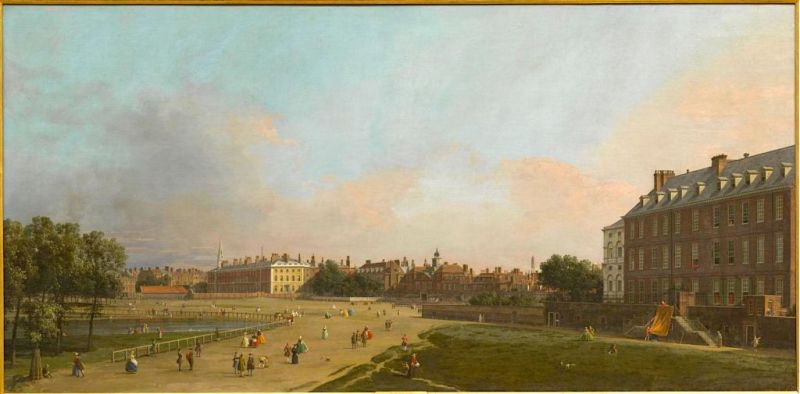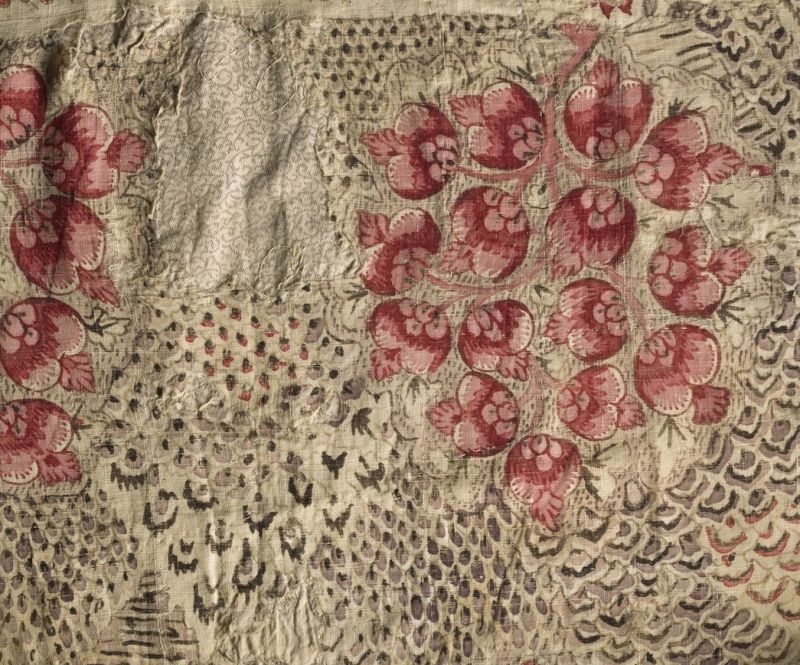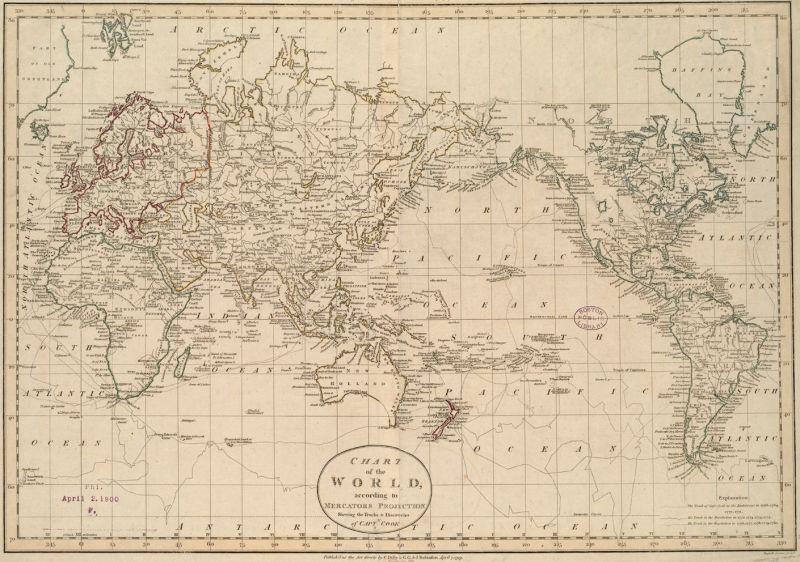ikfoundation.org
The IK Foundation
Promoting Natural & Cultural History
Since 1988


 Crowdfunding Campaign
Crowdfunding Campaignkeep knowledge open, connected, and growing on this textile history resource...
OBSERVATIONS OF BEAUTY AND TEXTILES
– by 18th century travelling Natural Historians
Textile observations made by Carl Linnaeus and his so-called seventeen apostles may be viewed from a multitude of perspectives. This essay is based on research of their travelling accounts – focusing on descriptions of beauty and delight as experienced during long-distance travels over land and sea. Positive notations in their journals are surprisingly frequent and will therefore be exemplified with a selection of such remarks dating from the 1730s to 1770s. Including opinions on clothing, delicate fabrics, swansdown, silkworms and their overall enjoyment of visiting new environments. To see everyday occurrences in a favourable light seems also to have assisted them during periods of tediousness, longing for home or poor health.
 With his assistant Lars Jungström, the former Linnaeus’ student Pehr Kalm departed in October 1747 from Uppland, to Göteborg in Sweden via Norway to England. Everywhere they passed through had something of interest to be noted, particularly in England where the group stayed for about six months. Besides “utilities” being observed, the beauty of the countryside, the gardens and the architecture were also admired. He diligently recorded their transports on land and at sea, the way they were quartered, the collecting of flora and fauna, the people’s manners and clothing, and he often drew comparisons with Swedish circumstances. Illustrated here with ‘The Old Horse Guards from St James’s Park’ – an area visited by Kalm the year before this painting was made by Canaletto (Giovanni Antonio Canal) in 1749. (Courtesy of: The Andrew Lloyd Webber Foundation/On display at Tate Britain, L02305).
With his assistant Lars Jungström, the former Linnaeus’ student Pehr Kalm departed in October 1747 from Uppland, to Göteborg in Sweden via Norway to England. Everywhere they passed through had something of interest to be noted, particularly in England where the group stayed for about six months. Besides “utilities” being observed, the beauty of the countryside, the gardens and the architecture were also admired. He diligently recorded their transports on land and at sea, the way they were quartered, the collecting of flora and fauna, the people’s manners and clothing, and he often drew comparisons with Swedish circumstances. Illustrated here with ‘The Old Horse Guards from St James’s Park’ – an area visited by Kalm the year before this painting was made by Canaletto (Giovanni Antonio Canal) in 1749. (Courtesy of: The Andrew Lloyd Webber Foundation/On display at Tate Britain, L02305).One particular detail that caught Pehr Kalm’s eye was the beautiful hats, which were made of horsehair, black silk or finely plaited straw. From a walk around St Paul’s Cathedral in April 1748, it was noted: ‘The women in this locality wore hats that were made of snow-white horsehair and looked extremely handsome.’ Whilst the contemporary chaplain Olof Torén – on a Swedish East India Company ship from 1748-49 and 1750-52 – was remarkably interested in the women’s beauty, their radiance, way of moving and posture, which meant that their clothes often entered his field of vision on several occasions along the route.
Pehr Osbeck – who also travelled as ship’s chaplain (1750-52) with the Swedish East India Company – was often fascinated by the surroundings during his voyage and described them alternately as ‘beautiful’, ‘pretty’, ‘agreeable ’, ‘ostentatious’, ‘pleasant’ and ‘delightful to the eye ’. The passage appears to have been propitious from a health point of view, as there were no complaints about illnesses or ailments on his own account in the diary. The voyage in both directions had also been exceptionally favourable, there having been no troublesome storms. The traveller brought significant collections back home and was celebrated by Carl Linnaeus for his contribution. Moreover, the latter presented him and his important discoveries within the field of natural history to Queen Lovisa Ulrika and King Adolf Fredrik.
 From Columbo at Ceylon (Sri Lanka) Carl Peter Thunberg – who travelled as ship’s physician etc with the Dutch East India Company – took an interest in fine fabrics purchased for the need of the well-to-do of the town, such as cottons and silks imported from Coromandel, Surat and Bengal. The Bengali qualities were perceived by the traveller to be the most beautiful of all, while fabrics from Tuticorin followed as a close second in terms of beauty, their finely painted flower motives resembling woven tapestries. The traveller was also surprised by the delicacy of many of the fabrics, writing on 5 February 1777: ‘It is incredible to what degree of fineness Cotton is sometimes spun upon the Indian coast. I had an opportunity of seeing Cotton-stuffs so exceedingly fine, that half a dozen shirts could be squeezed together in one hand. These are however not readily made use of, but are kept as rarities by people of distinction, to show to what a degree of perfection the art of spinning can be brought.’ None of the recorded examples are known to have survive, but such exquisite qualities will be exemplified with a close-up detail of this 18th century palampore – used as bedspread or wall hanging – originating from the Coromandel coast. (Courtesy of: The Nordic Museum, Sweden, NMA.0025881, Digitalt Museum).
From Columbo at Ceylon (Sri Lanka) Carl Peter Thunberg – who travelled as ship’s physician etc with the Dutch East India Company – took an interest in fine fabrics purchased for the need of the well-to-do of the town, such as cottons and silks imported from Coromandel, Surat and Bengal. The Bengali qualities were perceived by the traveller to be the most beautiful of all, while fabrics from Tuticorin followed as a close second in terms of beauty, their finely painted flower motives resembling woven tapestries. The traveller was also surprised by the delicacy of many of the fabrics, writing on 5 February 1777: ‘It is incredible to what degree of fineness Cotton is sometimes spun upon the Indian coast. I had an opportunity of seeing Cotton-stuffs so exceedingly fine, that half a dozen shirts could be squeezed together in one hand. These are however not readily made use of, but are kept as rarities by people of distinction, to show to what a degree of perfection the art of spinning can be brought.’ None of the recorded examples are known to have survive, but such exquisite qualities will be exemplified with a close-up detail of this 18th century palampore – used as bedspread or wall hanging – originating from the Coromandel coast. (Courtesy of: The Nordic Museum, Sweden, NMA.0025881, Digitalt Museum).In the 1740s, Carl Linnaeus himself carried out three provincial tours in Sweden: in 1741 to the islands of Öland and Gotland, in 1746 to the province of Västergötland, and in 1749 to the province of Skåne. Thanks to his professorial title, he was now able to devote himself wholeheartedly to botany and continuously published his observations and conclusions, something he kept up ceaselessly during his entire life. These three tours were financed by the parliament as they were considered politically significant for ascertaining the best development potential for the country’s mercantile economy, to help the start-up of more manufacturing, for instance, which could result in improved conditions for the country as well as for its inhabitants. However, beauty from various angles was also repeatedly mentioned by Linnaeus. For instance, in Skåne goose feather was a substantial trading item, used mainly as stuffing material for pads and bolsters. There were also other species of bird than the goose, which yielded suitable feathers and down, which was mentioned during the visit to Malmö on 13 June 1749. ‘Swansdown is very beautiful, soft and does not get so easily matted, yet it does not match up to eiderdown. It is used for bedding and also padding in clothes.’
![Whilst the naturalist Fredrik Hasselquist, among many matters from Sidon in present-day Lebanon noted: ’We came to Seide (Sidon) on the 14th [May 1751]. The gardens in this town are the most remarkable things in it, and in these consist its riches; wherefore my first business was to see them. They extend an entire French mile round the town, and contain Pomegranate-trees, Apricots, Figs, Almonds, Oranges, Lemons and Plums, in such quantities, that the town can yearly furnish other places with considerable cargoes of these fruits; but the most numerous, and in which their riches chiefly consist, are Mulberry-trees, on which they seed an infinite number of silk worms.’ Photograph showing: Bombyx Mori feeding on Morus alba or white mulberry (Courtesy of: Wikipedia, Morus, plant).](https://www.ikfoundation.org/uploads/image/3-bombyx-mori-morus-alba-800x600.jpg) Whilst the naturalist Fredrik Hasselquist, among many matters from Sidon in present-day Lebanon noted: ’We came to Seide (Sidon) on the 14th [May 1751]. The gardens in this town are the most remarkable things in it, and in these consist its riches; wherefore my first business was to see them. They extend an entire French mile round the town, and contain Pomegranate-trees, Apricots, Figs, Almonds, Oranges, Lemons and Plums, in such quantities, that the town can yearly furnish other places with considerable cargoes of these fruits; but the most numerous, and in which their riches chiefly consist, are Mulberry-trees, on which they seed an infinite number of silk worms.’ Photograph showing: Bombyx Mori feeding on Morus alba or white mulberry (Courtesy of: Wikipedia, Morus, plant).
Whilst the naturalist Fredrik Hasselquist, among many matters from Sidon in present-day Lebanon noted: ’We came to Seide (Sidon) on the 14th [May 1751]. The gardens in this town are the most remarkable things in it, and in these consist its riches; wherefore my first business was to see them. They extend an entire French mile round the town, and contain Pomegranate-trees, Apricots, Figs, Almonds, Oranges, Lemons and Plums, in such quantities, that the town can yearly furnish other places with considerable cargoes of these fruits; but the most numerous, and in which their riches chiefly consist, are Mulberry-trees, on which they seed an infinite number of silk worms.’ Photograph showing: Bombyx Mori feeding on Morus alba or white mulberry (Courtesy of: Wikipedia, Morus, plant).Fredrik Hasselquist’s journal overall presents a picture of an educated young man who, besides his scientific work, was curious about anything that came his way; the beautiful environments in the course of the voyage were especially noted, as were the means of transport overland, because of their joys as much as their travails. The traveller also appeared remarkably content with his quarters, in the same way as he often enjoyed both food and drink, and he was interested in music, song and the Arabic language. Sadly, he had poor health and died close to Smyrna on 9 February 1752, aged only 30.
 The Linnaeus Apostles travelled on all continents to over 50 countries, from 1745 to 1799. Beauty, pleasantness and delightfulness were some positive words chosen to emphasise their newly learned observations and experiences – including clothing, textile raw materials etc. Furthermore two of them – Daniel Solander and Anders Sparrman – were botanical assistants on James Cook’s first respective second voyage, his cartographic work was marked-out on this particular map. (Courtesy of: Wikimedia Commons. ‘Chart of the world…’ printed in 1799.)
The Linnaeus Apostles travelled on all continents to over 50 countries, from 1745 to 1799. Beauty, pleasantness and delightfulness were some positive words chosen to emphasise their newly learned observations and experiences – including clothing, textile raw materials etc. Furthermore two of them – Daniel Solander and Anders Sparrman – were botanical assistants on James Cook’s first respective second voyage, his cartographic work was marked-out on this particular map. (Courtesy of: Wikimedia Commons. ‘Chart of the world…’ printed in 1799.)Sources:
- Hansen, Lars ed., The Linnaeus Apostles – Global Science & Adventure, eight volumes, London & Whitby 2007-2012 (Pehr Kalm’s journal: Vol. Three/book one & two).
- Hansen, Viveka, Textilia Linnaeana – Global 18th Century Textile Traditions & Trade, London 2017 (pp. 22, 32, 53-54, 108, 125, 179-181, 279, 306).
- Hasselquist, Fredrik, Iter Palaestinum eller Resa til Heliga Landet förrättad ifrån år 1749 til 1752, utgifven af Carl Linnaeus, Stockholm 1757.
- Osbeck, Peter [Pehr], A Voyage to China and the East Indies, 2 vol., London 1771.
- The Nordic Museum, Sweden. (Digitalt Museum, information on catalogue card/palampore/NMA.00258819).
- Thunberg, Carl Peter, Travels in Europe, Africa and Asia, performed between the years 1770 and 1779. vol I-IV., London 1793-1795.
More in Books & Art:
Essays
The iTEXTILIS is a division of The IK Workshop Society – a global and unique forum for all those interested in Natural & Cultural History.
Open Access Essays by Textile Historian Viveka Hansen
Textile historian Viveka Hansen offers a collection of open-access essays, published under Creative Commons licenses and freely available to all. These essays weave together her latest research, previously published monographs, and earlier projects dating back to the late 1980s. Some essays include rare archival material — originally published in other languages — now translated into English for the first time. These texts reveal little-known aspects of textile history, previously accessible mainly to audiences in Northern Europe. Hansen’s work spans a rich range of topics: the global textile trade, material culture, cloth manufacturing, fashion history, natural dyeing techniques, and the fascinating world of early travelling naturalists — notably the “Linnaean network” — all examined through a global historical lens.
Help secure the future of open access at iTEXTILIS essays! Your donation will keep knowledge open, connected, and growing on this textile history resource.
been copied to your clipboard




– a truly European organisation since 1988
Legal issues | Forget me | and much more...
You are welcome to use the information and knowledge from
The IK Workshop Society, as long as you follow a few simple rules.
LEARN MORE & I AGREE







